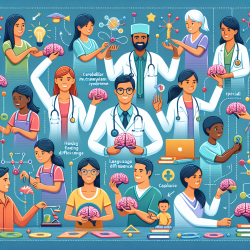Introduction
As a Special Education Director, one of the challenges I frequently encounter is addressing therapist staffing shortages in schools. A recent study titled Addressing inequalities in medical workforce distribution: evidence from a quasi-experimental study in Brazil offers insights that could be adapted to improve the distribution of therapy professionals in educational settings. The study examines Brazil's More Doctors Programme (MDP), which successfully increased access to primary healthcare in underserved areas, reducing hospital admissions and costs.
Key Findings from the Study
The MDP, launched in 2013, aimed to address the shortage of doctors in Brazil's underserved regions. The study found that the program:
- Reduced ambulatory admissions by 2.9% and costs by 3.7%.
- Saved the Brazilian government at least BRL 27.88 million (approximately US$ 6.9 million) between 2014 and 2017.
- Improved access to healthcare for 63 million people, deploying over 17,000 physicians in just two years.
Implications for School Therapy Programs
While the study focuses on medical workforce distribution, its findings can inform strategies to improve the distribution of therapists in schools. Here are some actionable steps:
- Emergency Provision: Similar to the MDP's emergency provision of doctors, schools could implement temporary measures to fill immediate gaps in therapy services.
- Training and Incentives: Offering training programs and financial incentives could attract more therapists to underserved school districts.
- Infrastructure Improvements: Investing in the infrastructure of therapy facilities within schools can make these positions more attractive to potential hires.
Encouraging Further Research
Practitioners and researchers in the field of special education are encouraged to delve deeper into the findings of this study. Understanding the nuances of Brazil's approach can inspire innovative solutions to staffing shortages in schools. By conducting further research, we can develop tailored strategies that address the unique challenges faced by educational institutions.
Conclusion
The Brazilian More Doctors Programme provides a compelling case study for addressing workforce distribution challenges. By adapting its strategies to the context of school therapy programs, we can enhance access to essential services for students in need. For those interested in exploring this topic further, I recommend reading the original research paper.
To read the original research paper, please follow this link: Addressing inequalities in medical workforce distribution: evidence from a quasi-experimental study in Brazil.










